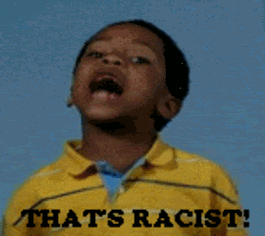
NY Post: “Can racism be stopped in the third grade?” That’s the question asked in this week’s New York Magazine cover story by journalist Lisa Miller. The short answer, of course, is that it all depends on how you define racism.
At the Fieldston Lower School, a $43,000 per year Riverdale institution, the administration sees racism everywhere. Just consider the “microaggressions” that have been uncovered.
According to the piece: “A girl puts her hands in another girl’s hair; a boy asks his Asian friend where he’s really from. A number of years ago, a white student in a fourth-grade biography unit delivered a presentation on Jackie Robinson while in blackface.”
Here’s a newsflash folks: This is not racism. It’s children being curious about the way their friends look and trying their best to look like an American hero.
If you want it to stop, you can tell them that it’s not appropriate to touch other people without their permission, that many people who look different were born in this country and that if you’re going to dress up as someone else you don’t have to change the color of your skin.
You want to know what real racism looks like? Try this. In response to these incidents, as well as a whole bunch of multi-culti-educational mumbo jumbo, Fieldston has decided to institute a policy of…segregation. Yes, that’s right. We have finally come full circle.

The new liberal solution to the problems of racial tension in America today is to have third-graders fill out a questionnaire identifying their races and then spend time once a week with people who look just like them. Because people who look alike also think alike. And let’s face it, you can only really feel comfortable with people who look like you.
So what is the goal of this program? As Miller explains: “Disinhibited by the company of racially different peers, the children would, the school hoped, feel free to raise questions and make observations that in mixed company might be considered impolite. The bigger goal was to initiate a cultural upheaval, one that would finally give students of color a sense of equal ownership in the community.”
There’s nothing like a little social engineering to separate the true believers from the people who just think of themselves as liberal. “I was like, Wait. What?” remembers one mother. Another quizzed her 11-year-old daughter as they were driving. ‘We have to go in our race groups’ was how the girl explained it. The mother hoped her daughter had misunderstood.”
Alas, no. She understood perfectly. When the racial “affinity groups” meet, they are asked questions like “How do you see other people? How do other people see you? What assumptions do you make based on appearances?”
They are told to stare at groups of kids of other races and then share the things they wonder aloud. Said one boy, “We talk about how it’s important to know what your race is. We talk about the difference between being prejudiced and being racist.”
Wait, what’s the difference again? Oh never mind. The point of this exercise is once again to reemphasize the racial differences among kids. Because not to do so, according to the experts is to “exacerbate the problem by papering it over.” Instead the school wants kids to have “authentic” conversations about race.
But if you allow 8-year-olds to have an open dialog about race, they might do things like ask about another kid’s hair or heritage. Can you imagine all the microaggressions that might occur if someone recorded the group of black or white kids being asked to “wonder” about kids of a different race?
At least some of the parents at the school are thrilled with this program and seem to feel it will help prepare their students for life after Fieldston. One mother describes the sense of exhaustion and frustration she felt being a black student at Exeter coming from the Bronx.
When she saw all the white people, she asked her mother if she could come home. What really “broke” her, she says, was a class called “Black Experience in White America,” in which she was consistently asked to explain black perspective to her white classmates. She thinks an “affinity group” will help prepare her daughter for this experience.
Perhaps. But this is not a problem that happened in math class or English lit. The demands that a black student represent his or her race in class comes from courses that focus on race and teachers that think a teenager’s personal experience is worthy of academic study.
Like so much of education from kindergarten all the way through a PhD these days, the affinity groups are really just another way to encourage narcissism. Because what matters most for the future of this country — for justice, for equality, for racial harmony — is how you feel.
DCG

